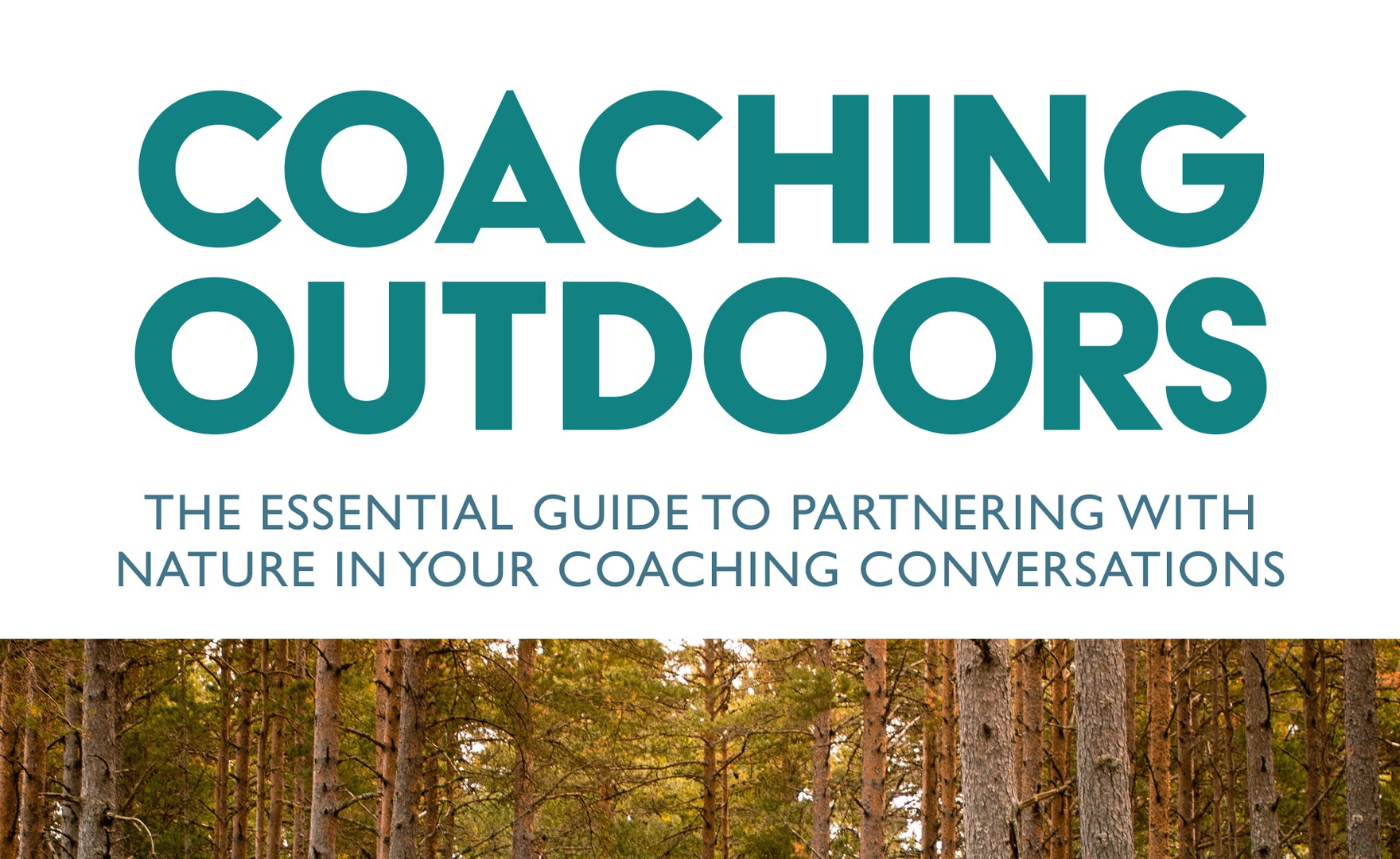Interview
In conversation with Natalia Zalesinska
17th June 2025 by Lee Robertson
In this interview, we speak with Natalia Zalesinska, executive coach, trainer, and head of AoEC Poland. With a background in…

I’m filled with a sense of potential, that the coaching profession is becoming aware of the possibilities and systemic benefits to be gained from inviting nature into the coaching relationship. Both coach and client are open to working outdoors more than ever before. There has never been a better time to suggest that your coaching sessions take place outside; the door is most definitely open. A good place to start is where we go when we step out that door.
Nature encompasses elements and phenomena of the Earth’s land, water and biodiversity from a pot plant, small stream or park to expansive, pristine wilderness with its dynamic of weather and geology. So, from office grounds to Ben Nevis – where is the most appropriate space for coaching outdoors? Well, it depends… Where are you and your client going to be most physically comfortable? What location is going to serve as the best container to meet the need of the client and their current issue? Where is going to provide a psychologically safe space?
A coaching session’s focus should be on the conversation and not on the challenge of walking. If your or your client’s capacity is taken up with physical exertion, wayfinding or managing a fear of sheep, cows, birds or heights, then you are not offering a supportive environment or psychological safety.
It is important that you know your comfort zone and boundaries and those of your client so that you work within them (unless it complements the client’s development to work at the edge of their boundary and you’ve contracted to do so). For many people their comfort zone will be a low-level walk on a firm path; for a handful of others it might be mountainous terrain.
Due to my participation in the Clipper Round the World Yacht Race, I’m often asked about running coaching sessions on boats for individuals and teams. I can honestly say that unless you are both (or all, if it’s team development) very accomplished sailors or, you are spending a few consecutive days on a development journey and are able to get comfortable at sea, then the environment is not going to support the work.
Much of my attention during my first few weeks at sea was taken up with ‘I hope I’m not seasick’, ‘what does this rope do?’, ‘what were we told about winches?, I don’t want to lose my finger in this one’, ‘make sure I don’t get hit by the boom’, ‘what if I do something wrong?’, ‘where’s the best place to stand/sit?’, ‘how do I go to the toilet and how does it flush?’. My capacity was consumed with staying safe and managing my insecurities at sea. I had nothing left for reflection, awareness and exploration of my patterns, behaviours, thoughts, feelings and assumptions.
Six months later after being at sea 24/7, it was a different story; sailing was sub-conscious and I would have been in a great place to have been coached at sea, not least because I felt alive and free on the ocean. While a racing yacht is an extreme example, it helps to make the point about how important it is to stay within your and your client’s comfort zone, allowing your full attention, at every level, to be focused on the coaching session.
The qualities of the natural setting you choose can determine the impact of the session for a client. For example, a small shady woodland area enclosed by trees can feel private, intimate and containing – especially good for emotional fragility. Open downs with their vast expanse of sweeping space, few trees and long views can feel much more exposing and uncontained – perhaps overwhelming for a client who is feeling particularly vulnerable.
However, if a client is wanting to shift perspective and unstick something then a space that invites freedom and movement can be supportive. A horizon is great for conversations about the future. Water is great for reflection. Being close to a river, stream or pond is also great to support accessing emotions. When we connect emotionally our eye gaze is drawn down; looking at moving water can begin this accessing process. Nature offers so much in the way of supporting us. As coaches we have an opportunity to become attuned to this and to match the client’s needs with the best environment, thus allowing nature to make a positive contribution to the dynamic created for the client.
Thank you to Lesley and the team at Practical Inspiration Publishing for sharing this extract from Coaching Outdoors which is available directly from the publisher or Amazon and other good book shops.
Lesley Roberts BEd, MSc is an executive coach and adventurer who has been coaching outdoors since 1999. Her academic research focused on how nature can support coach and client. After 16 years with Mars Inc she founded Brave Conversations, working with global teams and individuals to unlock their potential. In 2019 she founded Coaching Outdoors to bring the benefits of partnering with nature to as many people as possible.
Coaching Outdoors by Lesley Roberts is published by Practical Inspiration Publishing.
Interview
17th June 2025 by Lee Robertson
In this interview, we speak with Natalia Zalesinska, executive coach, trainer, and head of AoEC Poland. With a background in…
Interview
17th June 2025 by Lee Robertson
In this interview, we talk to Mitra Gholam, executive and leadership coach and member of the team at Alira Consulting,…
Article
17th June 2025 by Lee Robertson
Coaching has firmly established itself as one of the most effective ways to unlock human potential at work. But simply…